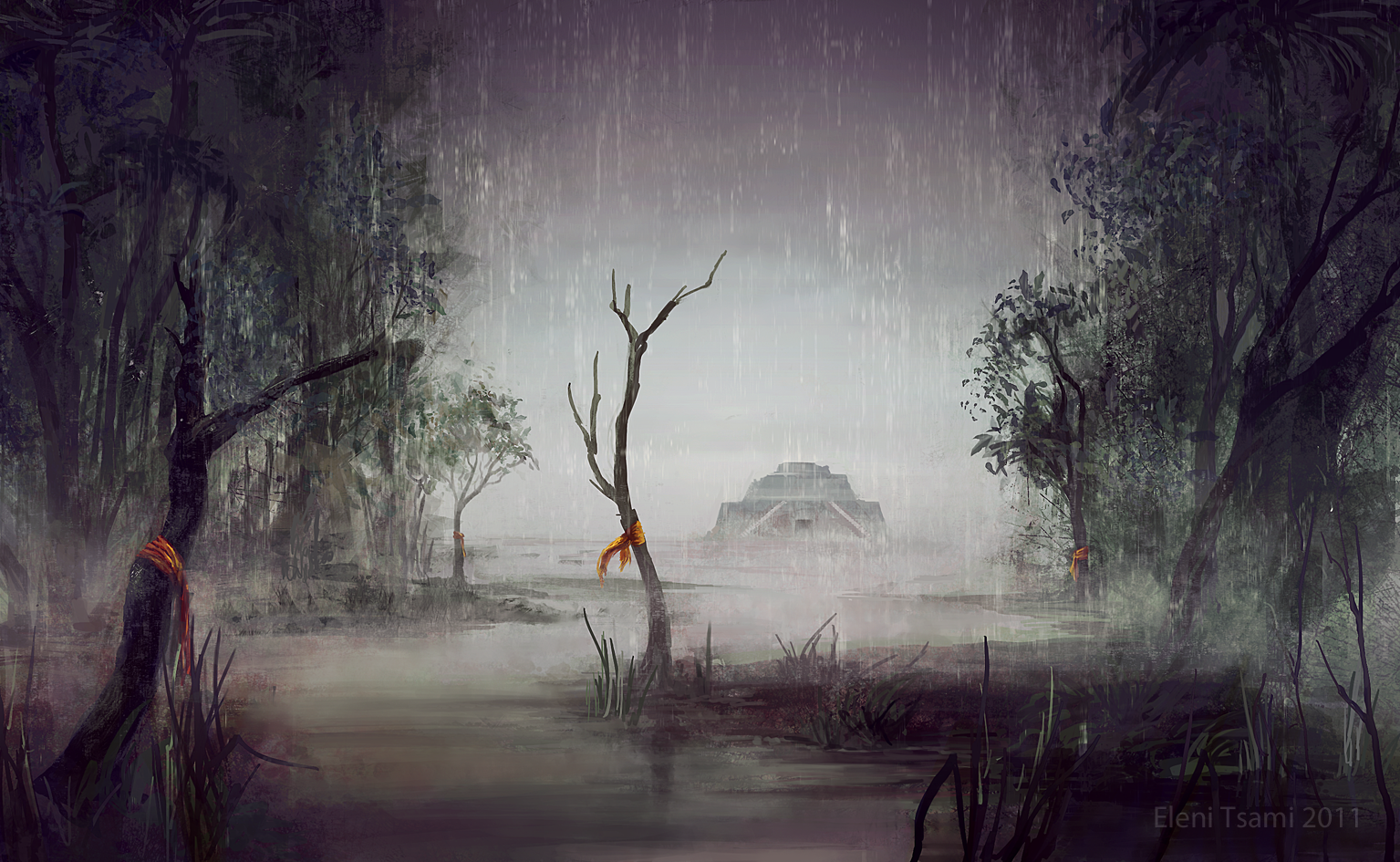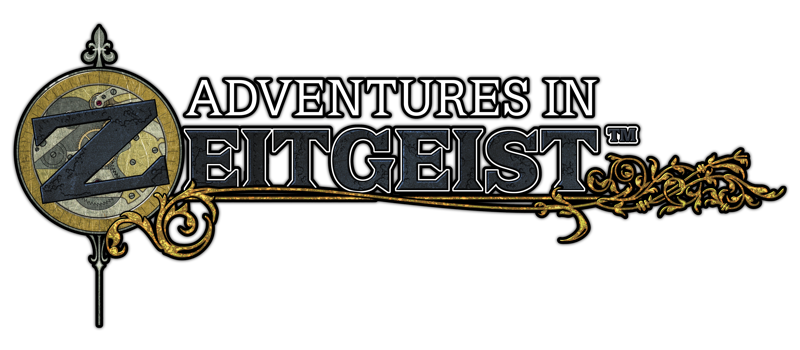
The ZEITGEIST setting is a step away from traditional fantasy. In many parts of the world, day to day existence is much unchanged from how folks lived centuries ago. Fey trickery, prowling monsters, and roaming brigands pose as great a threat as ever. Priests and druids offer guidance, and it’s possible to live all one’s entire years without seeing a steam engine.
Invention, Ideologies, and Inflection Points
Ironclad industry is reshaping cities, and railroads slice through the wilderness. Steam and soot darken the skies over cities, whose urban labyrinths seem to have spirits of their own. Fresh frights crawl out of imagination and into the shadows of gaslights, and fiends that the old religions thought they’d banished find novel forms in the new age.
Heroes and scoundrels stroll smoggy streets in top hats and tails, wield pistols or enchanted arcane fusils, and battle over matters of philosophy and economics as often as over treasure and thrones. Groups once lumped together as ‘monstrous peoples’ have founded a nation of their own, eager for prosperity and respectability. And while many resist efforts to scientifically categorize magic, academic institutes of sorcerous studies are attracting extravagant investments from nations who fear what inventions – technological or thaumaturgical – their rivals might bring to bear.
No land on the continent of Lanjyr is static. Every nation and philosophy is vying for influence, and your adventures will determine the shape of things to come.
Humans, the Great Nations, and the Great Eclipse
Humans dominate three of the six great nations of the modern world. Their ascendance in the past two thousand years toppled a mighty elf empire and provoked belief in doomsday millennialism among many dwarves, a belief that proved prescient.
Twenty years ago, the sun and stars vanished for nearly a year, an event called the Great Eclipse. The world was pulled back from the brink of destruction thanks to a group led by the monarch of the nation of Risur. Though predominantly human, Risur is a nation of old druidic traditions, with close ties to the fey, passed down from the original elf inhabitants. It weathered the Eclipse better than any other country, and its influence helped forestall war in the aftermath.
Elves, the Dreaming, and the Great Malice
Of the many elvish cultures around the world, Elfaivar created unparalleled magical wonders, with cities that straddled between this world and the Dreaming, a fey plane that is a mirrored reflection of reality. But five centuries ago Elfaivar collapsed when its goddess, Srasama, was slain, which caused nearly every woman of that nation to perish. Until recently, this disaster – the Great Malice – had been the most pivotal event in history. Elfaivaran survivors were often abused and demonized as they struggled to keep their people and culture alive, and many withdrew fully into the Dreaming.
At the end of the Great Eclipse, however, a last vestige of Srasama’s power granted a miracle: millions of those same women who had perished in the Malice were restored to life. Though displaced by centuries, their return has heralded an unsteady restoration of Elfaivar to the world stage.
Devas, Deeplings, and Technology
Srasama died at the climax of a holy war against a faith called the Clergy. The backlash of her fall afflicted two groups and created two heritages. Mortals present at the site of her death were infused by a sliver of her divinity. Marked by strange geometric lines, they continually reincarnated in the following centuries, and came to be known as devas.
Across the world in the capital city of the Clergy, worshipers were marked by a curse. Given horns and tails, they came to be known as deeplings. (Others call them tieflings or cambions.)
In addition, the land that today forms the nation of Danor was left without magic. Two centuries ago Danor – majority human but led by the descendants of those deeplings – sparked a revolution of industry and mighty science almost as powerful as the magic they lacked. Magic recently returned to Danor, and today innovators weave together technology and magic into arcanoscience, which is watched warily by those who fear some grand new weapon will precipitate a global war.
Dwarves, Doomsday, and Dogma
The major dwarven nation, Drakr, was grimly prepared for the doomsday that arrived two decades ago. As they expected, ancient horrors clawed free from glaciers and fell from the black sky. The world was engulfed in deadly cold. But then the world failed to end. A culture dominated by a dour mix of duty and pessimism found a weight suddenly lifted from it. In that void, an explosion of new dogmas spread and competed for adherents.
Drakran society organizes around philosophical factions, and a broad base supports the current chancellor’s eschatology movement, which instructs people to plan their endings – for life, for governments, for literature, even for relationships. Drakrans credit eschatology for helping survive the end of the world.
Traditionalist clans see the chancellor’s reformist policies as a threat to their power, and so they back other philosophers to splinter his base. One growing faction are those who, in the aftermath of the Great Eclipse, aren’t quite convinced the world didn’t end, and solipsistically doubt reality. A major international crime syndicate called the Kuchnost encourages such pathological skepticism, the better for them to operate on the edges of truth and trust, because if nothing is real, why follow tradition – or even laws?
Savagery, Liberty, and Dragons
The youngest of the great nations, Ber, shook free in the past two centuries from the yoke of toppled dragon tyrants. Once a chaotic quilt of quarreling ‘monstrous’ peoples, Ber arose from an unlikely alliance of dragonborn, gnolls, goblins, kobolds, lizardfolk, minotaurs, orcs, and others. United by a common devotion to personal liberty, they live in an uneasy peace as their rulers unite the disparate peoples with a shared pride in proving their civility to a doubting world.
A handful of the old dragon tyrants managed to avoid being slain by finding refuge in other countries. And in recent years hitherto unseen fey dragons have lain claim to some of Ber’s more wild frontiers. Their arrival is blamed on the tropezaros, a movement of survivalists and guerilla warriors who seek to reconnect their modernizing society with the wilds of nature.
Piety and the Planes
People have always pondered the heavens, but today the hold the night sky has on the world is undeniable.
In Risur, folk prophets called skyseers watch the movements of the stars to foretell the future. More enlightened scholars study the roaming planets to understand how the flow of their energies affects the fundamental nature of reality, while industrialists wonder at the potential riches of those worlds. Elfaivaran cities weave between the real world and the Dreaming. Sailors in the Yerasol Archipelago tell tales of mirages revealing coastlines of other worlds, and though many think them mad, a cadre of Drakran engineers claim they will soon have a vehicle that can fly to other worlds on columns of flame.
But the presence of other planes is most strongly felt in Crisillyir, a human nation whose powerful clergy once kept locked away demons, and whose bishops would frighten sinners by invoking condemned spirits from the Bleak Gate. That realm, a dark mirror of the real world, holds the dead until they pass on to their eternal reward. During the Great Eclipse, however, ancient evils escaped from Clergy prisons, sowing doubt and discord. The once monolithic faith is fracturing into two opposing denominations, each suspicious the other is being corrupted by entities from other worlds.
